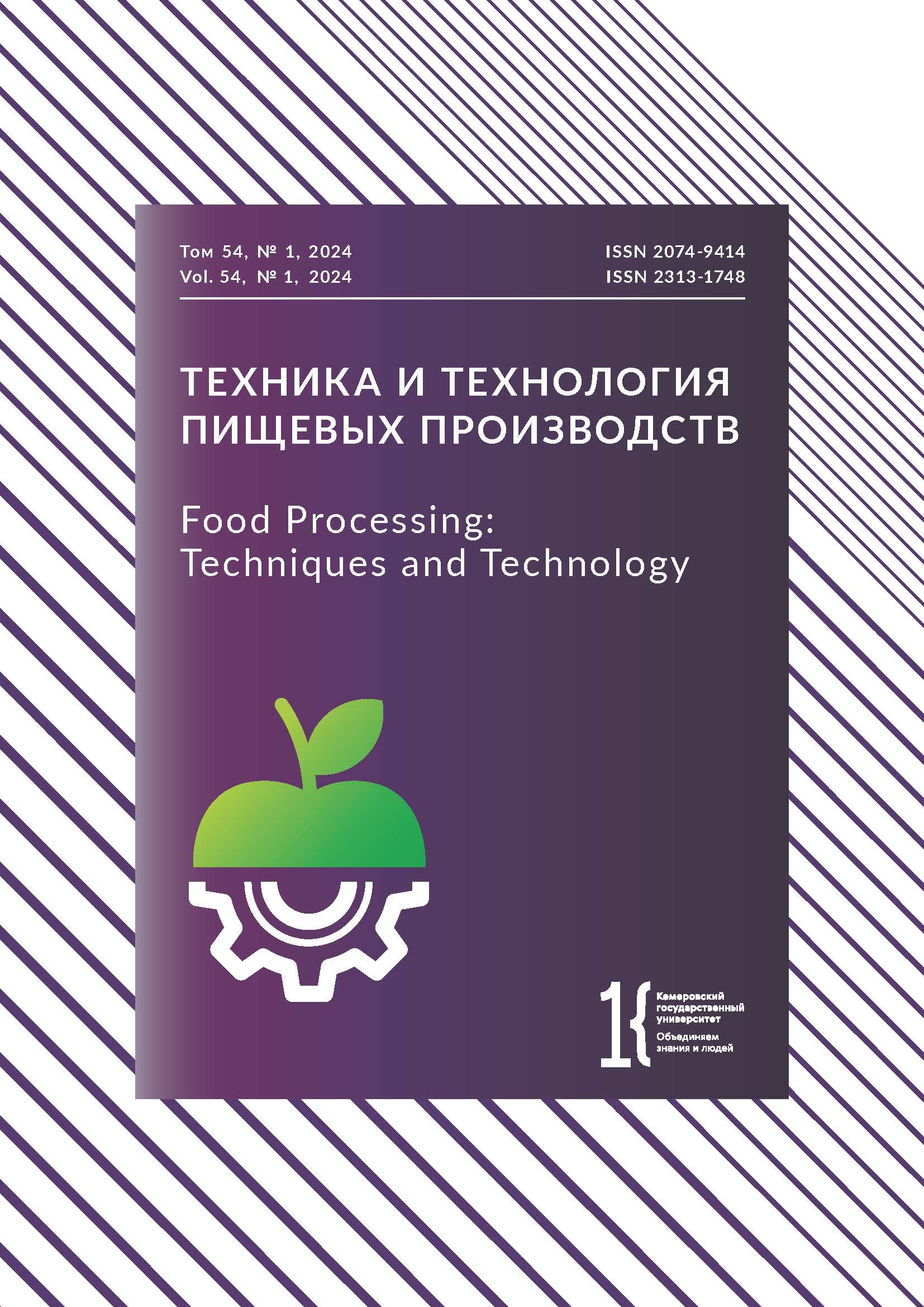M.V. Lomonosov Northern (Arctic) Federal University
Moscow, Russian Federation
Moscow, Russian Federation
Arkhangelsk, Russian Federation
from 01.01.2008 until now
Arkhangelsk, Russian Federation
Vologda, Vologda, Russian Federation
Karavaevo, Russian Federation
VAK Russia 4.1.2
VAK Russia 4.3.3
VAK Russia 1.5.6
UDC 63
Cloudberry (Rubus chamaemorus L.) and arctic raspberry (Rubus arcticus L.) are highly nutritional and medicinal but lowyield berries, with some populations being on the verge of extinction. Micropropagation biotechnologies are cost-effective and may provide healthy and plentiful planting material for these valuable berries. Clonal micropropagation of cloudberry and arctic raspberry requires new methods adapted for Russian varieties. This research featured the effect of sterilizing agents on the survival rate of explants of R. chamaemorus and R. arcticus, as well as the effect of growth regulators in the nutrient medium on their organogenesis in vitro. Berries obtained from regenerant plants of R. chamaemorus (Arkhangelsk and Vologda varieties) and R. arcticus (Sofia and Galina varieties) underwent a biochemical analysis. Further research involved the effect of sterilizing agents and exposure time on the viability of explants, as well as the effect of the nutrient medium composition and the concentration of growth regulators on the development of microshoots and roots in vitro. In case of lateral buds, the highest survival rate of both types of explants (80–96%) belonged to the samples sterilized with 0.2% silver nitrate and 5% Lysoformin 3000 for 15 min. In case of etiolated shoots (79–100%), it was the samples treated with 0.2% silver nitrate, 0.01% Nika 2, and 5% Lysoformin 3000 for 10 min. The maximal total length of microshoots in R. chamaemorus (19.4–22.7 cm) was registered at 0.1 mg/L Cytodef in the Murashige and Skoog medium. The maximal total length of roots (46.0–56.6 cm) was obtained when the medium contained 0.5 mL/L indolylacetic acid. As for R. arcticus, the maximal total lengths of microshoots (22.4–22.8 cm) and roots (86.6–89.3 cm) occurred at the same concentrations of growth regulators on 1/2 Murashige and Skoog medium. In this research, Cytodef and indolylacetic acid applied in the process of clonal micropropagation of R. chamaemorus and R. arcticus made it possible to increase the yield of high-quality planting material for commercial plantations.
Rubus arcticus L., Rubus chamaemorus L., berries, plants, clonal micropropagation, in vitro, biochemical composition, sterilization, organogenesis
1. Makarov SS, Bagayev ES, Tsaregradskaya SYu, Kuznetsova IB. Problems of use and reproduction of phytogenic food and medicinal forest resources on the forest fund lands of the Kostroma region. Russian Forestry Journal. 2019;372(6):118–131. (In Russ.). https://doi.org/10.17238/issn0536-1036.2019.6.118
2. Gudovskikh YuV, Egorova NYu, Egoshina TL. State of Rubus arcticus (Rosaceae) coenopopulations in Kirov region. Botanicheskii Zhurnal. 2020;105(8):779–793. (In Russ.). https://doi.org/10.31857/S0006813620080062
3. Verkhov N. Swamp guard. Ural Pathfinder. 2018;(12):12–15. (In Russ.).
4. Markovskaya EF, Schmakova NYu, Morozova KV, Ermolaeva OV. Morphophysiological features of assimilation apparatus of Rubus chamaemorus (Rosaceae) leaves in West Svalbard. Botanicheskii Zhurnal. 2019;104(11–12):1740–1752. (In Russ.). https://doi.org/10.1134/S0006813619110115
5. Puupponen-Pimiä R, Nohynek L, Suvanto J, Salminen J-P, Seppänen-Laakso T, Tähtiharju J, et al. Natural antimicrobials from cloudberry (Rubus chamaemorus) seeds by sanding and hydrothermal extraction. ACS Food Science and Technology. 2021;1(5):917−927. https://doi.org/10.1021/acsfoodscitech.0c00109
6. Velichko NA, Sharoglazova LP, Smolnikova YaV. The study of the lipid composition of fruits of representatives of the genus Rubus and evaluation of the prospects for their application in food technologies. Bulletin of KSAU. 2016;118(7):137–145. (In Russ.). https://elibrary.ru/WCYKRT
7. Afrin S, Giampieri F, Gasparrini M, Forbes-Hernandez TY, Varela-López A, Quiles JL, et al. Chemopreventive and therapeutic effects of edible berries: A focus on colon cancer prevention and treatment. Molecules. 2016;21(2). https://doi.org/10.3390/molecules21020169
8. Pushnitsa AA, Bespalova VV. Effect of formulation components and technological processes on the quality of sweet jelly. News of Higher Educational Institutions. Arctic Region. 2018;(1):61–68. (In Russ.). https://elibrary.ru/YZKHQT
9. Aguilera-Correa JJ, Fernández-López S, Cuñas-Figueroa ID, Pérez-Rial S, Alakomi H-L, Nohynek L, et al. Sanguiin H-6 fractionated from cloudberry (Rubus chamaemorus) seeds can prevent the methicillin-resistant Staphylococcus aureus biofilm development during wound infection. Antibiotics. 2021;10(12). https://doi.org/10.3390/antibiotics10121481
10. Karp K, Mänd M, Starast M, Paal T. Nectar production of Rubus arcticus. Agronomy Research. 2004;2(1):57–61.
11. Ragnar M, Rytkönen P, Hedh J. Åkerbär. Luleå: Black Island Books; 2017. 169 p.
12. Luginina EA, Egoshina TL. Biochemical composition of fruits of wild growing berry plants. In: Weisfeld LI, Opalko AI, Bekuzarova SA. Temperate horticulture for sustainable development and environment. New York: Apple Academic Press; 2018. pp. 81–96. https://doi.org/10.1201/9781351249393
13. Boulanger-Pelletier J, Lapointe L. Fertilization stimulates root production in cloudberry rhizomes transplanted in a cutover peatland. Canadian Journal of Plant Science. 2017;97:1046–1056. https://doi.org/10.1139/cjps-2016-0235
14. Tyak GV, Kurlovich LE, Tyak AV. Biological recultivation of degraded peatlands by creating forest berry plants. Vestnik of the Kazan State Agrarian University. 2016;11(2):43–46. (In Russ.). https://doi.org/10.12737/20633
15. Tyak GV, Makarov SS, Kalashnikova EA, Tyak AV. Reproduction and cultivation of the arctic bramble (Rubus arcticus L.). Pomiculture and Small Fruits Culture in Russia. 2018;52:95–99. (In Russ.). https://elibrary.ru/XMSYKD
16. Kikowska M, Turowska N, Thiem B. Can in vitro cultures of protected plant species be a source of raw materials for phytochemical and biological studies? Farmacja Współczesna. 2019;12:210–217. (In Polish).
17. Zontikov DN, Zontikova SA, Malahova KV. Influence of the composition of nutrient media and growth regulators during clonal micropropagation of some economically valuable representatives of the genus Rubus L. Agrohimia. 2021;(6):36–42. (In Russ.). https://doi.org/10.31857/S0002188121060144
18. Makarov SS, Kuznetsova IB, Upadyshev MT, Rodin SA, Chudetsky AI. Clonal micropropagation of cranberry (Oxycoccus palustris Pers.). Food Processing: Techniques and Technology. 2021;51(1):67–76. (In Russ.). https://doi.org/10.21603/2074-9414-2021-1-67-76
19. Chudetsky AI, Rodin SA, Zarubina LV, Kuznetsova IB, Tyak GV. Clonal micropropagation and peculiarities of adaptation to ex vitro conditions of forest berry plants of the genus Vaccinium. Food Processing: Techniques and Technology. 2022;52(3):570–581. (In Russ.). https://doi.org/10.21603/2074-9414-2022-3-2386
20. Makarov SS, Upadyshev MT, Khamitov RS, Antonov AM, Kulikova EI, Kuznetsova IB. Prospects for industrial cultivation and biotechnological methods of propagation of wild berry plants. Moscow: Kolos-s; 2023. 153 p. (In Russ.).
21. Akimov MYu, Bessonov VV, Kodentsova VM, Eller KI, Vrzhesinskaya OA, Beketova NA, et al. Biological value of fruits and berries of Russian production. Problems of Nutrition. 2020;89(4):220–232. (In Russ.). https://doi.org/10.24411/0042-8833-2020-10055











